17 Phenomenal Things to to in Cairo, Egypt
Cairo tourist attractions are known throughout the world. The world is obsessed with pyramids and the sphinx and hundreds of thousands of tourists flock to Egypt every year to see and touch over 5000 years’ worth of history. National Geographic and the most famous Egyptologist in the world Zahi Hawass (who inspired Indiana Jones) have informed and fired the imagination of many of these visitors that wander through the desert.
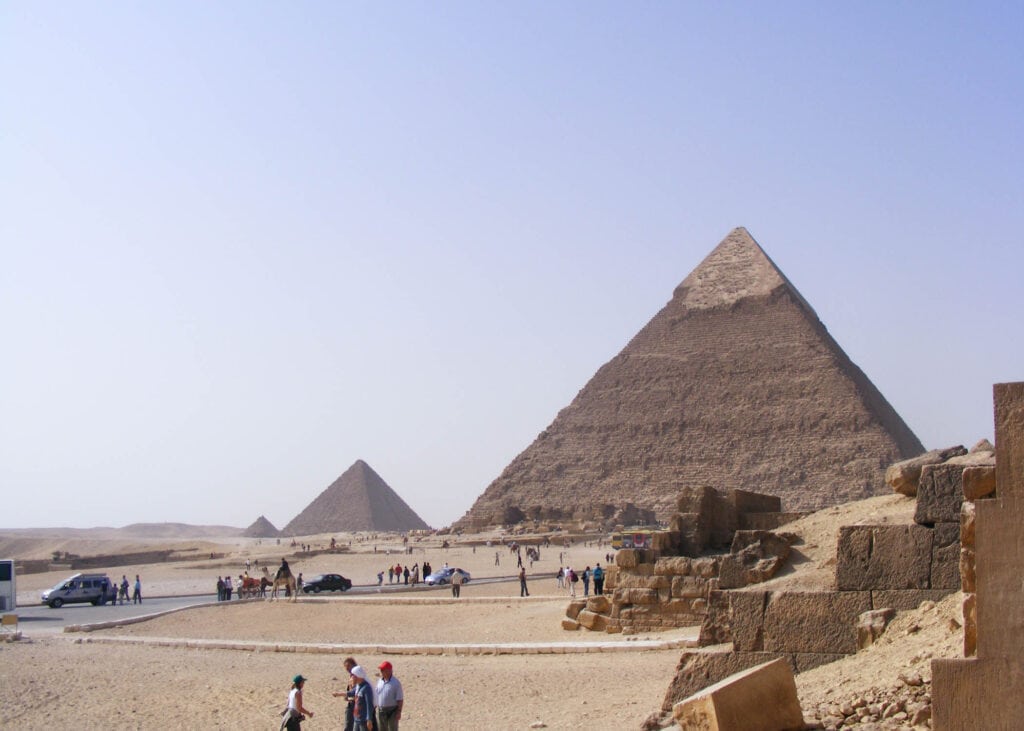
Egypt’s inspiring work to find and catalogue its treasures has become a mission that we in the West find mesmerizing. From the Valley of the Kings, the Sphinx and even natural wonders like the White Desert the Pyramids of Giza turned out to be somewhat different from what I expected.

- 17 Phenomenal Things to to in Cairo, Egypt
- Map of the Giza Plateau
- What to see at the Giza Plateau
- Things to see on the Giza Plateau
- Tips for visiting the Pyramids at Giza
- Camel Rides at the Giza Plateau
- Khufu and Menkaure Pyramids
- The Sphinx
- Grand Egyptian Museum – GEM
- Monastery of Saint Simon – the Cave Church
- Museum of Egyptian Antiquities (Cairo Museum)
- Cross the Nile on the Qasr El Nil Bridge
- Khan el Kalili Bazaar
- Church of St Sergius and Bacchus – Abu Sarga
- Sultan Hassan Mosque
- Ben Ezra Synagogue
- Visit the Ibn Tulun Mosque
- The Hanging Church
- Al-Azhar Mosque
- Al Azhar Park
Map of the Giza Plateau
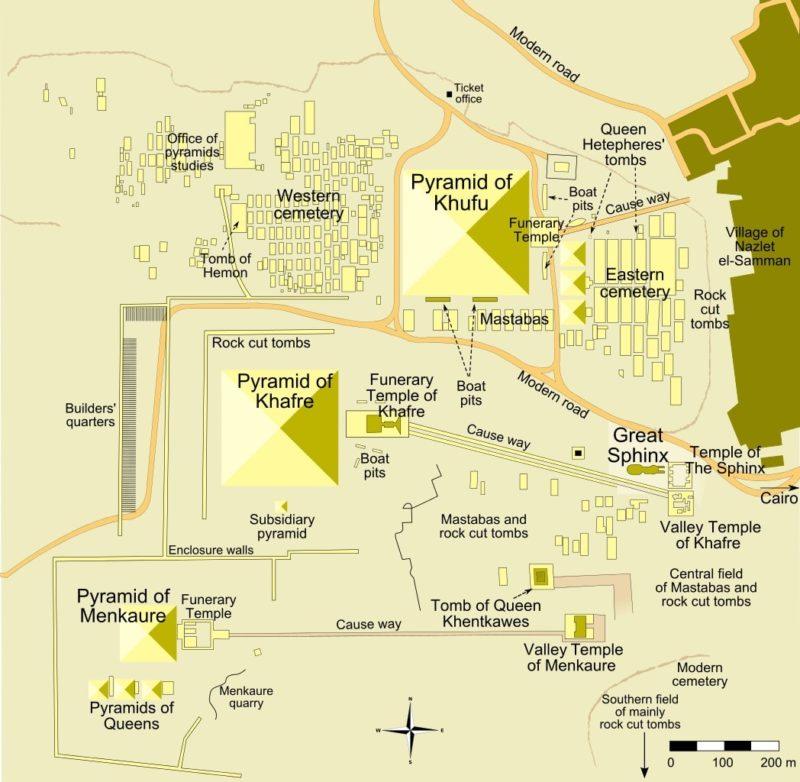
What to see at the Giza Plateau
Sitting at the foot of the Pyramids lies Giza which was originally a city that overlooked Memphis which was the ancient capital of Egypt and the Giza plateau which is part of the city became a Necropolis which means a “city of the dead” or cemetery and includes not only the pyramid tombs but several smaller Queens’s pyramids, and earlier and later graves and tombs of Egyptian dignitaries.

Currently, Giza is an independent subdivision or as it is known in Egypt a “governate” of the City of Cairo, similar to our subdivisions in North America. This has been a UNESCO World Heritage site since 1979 and it is an unforgettable bucket list trip.
I will also warn you that Giza is not a pretty city so be prepared. Since we had taken a cruise into Alexandria we also arranged a day trip to see the Pyramids and the Egyptian Museum.
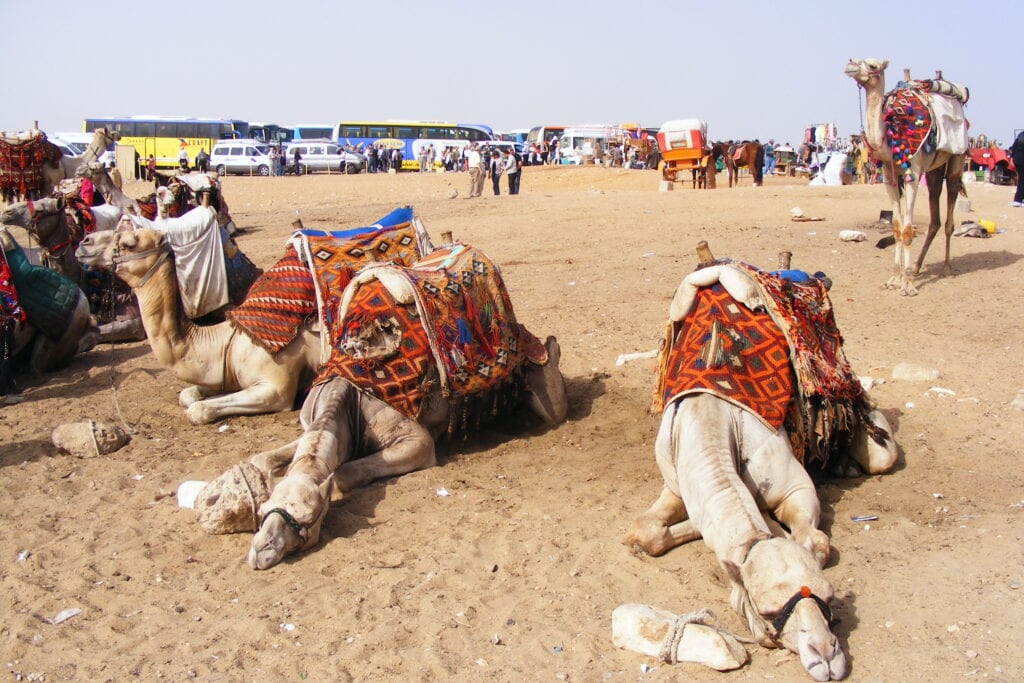
The drive up Pyramid Road will take you by surprise, the vision of the pyramids alone in the midst of the desert that Westerners have come to expect is not particularly accurate. Pyramid Road runs just slightly east of the City and on one side of the road sits a subdivision of hotels and house and on the right the great pyramids. The peaks appear tiny in the distance and the sense of anticipation and excitement builds as the only surviving wonder of the ancient world comes into view.
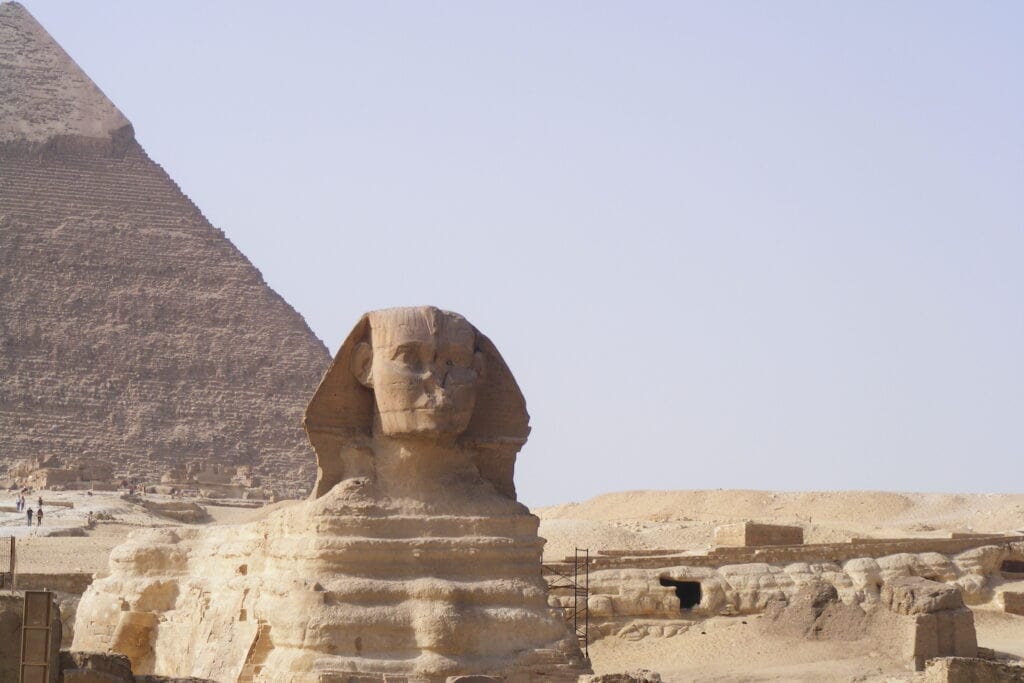
Things to see on the Giza Plateau
- Pyramid of Khufu – The Great Pyramid
- Pyramid of Khafre
- Pyramid of Menkaure
- The Great Sphinx
- Pyramids of the Queens and other smaller pyramids
- Tomb of Meresankh III
- Valley Temple of Khafre
- Panoramic viewpoint (a designated spot complete with parking where you have the iconic view of all 3 Pyramids lined up)
- The cemeteries although there’s not much to see
- The Solar Boat Museum has now been moved to the new Grand Egyptian Museum.
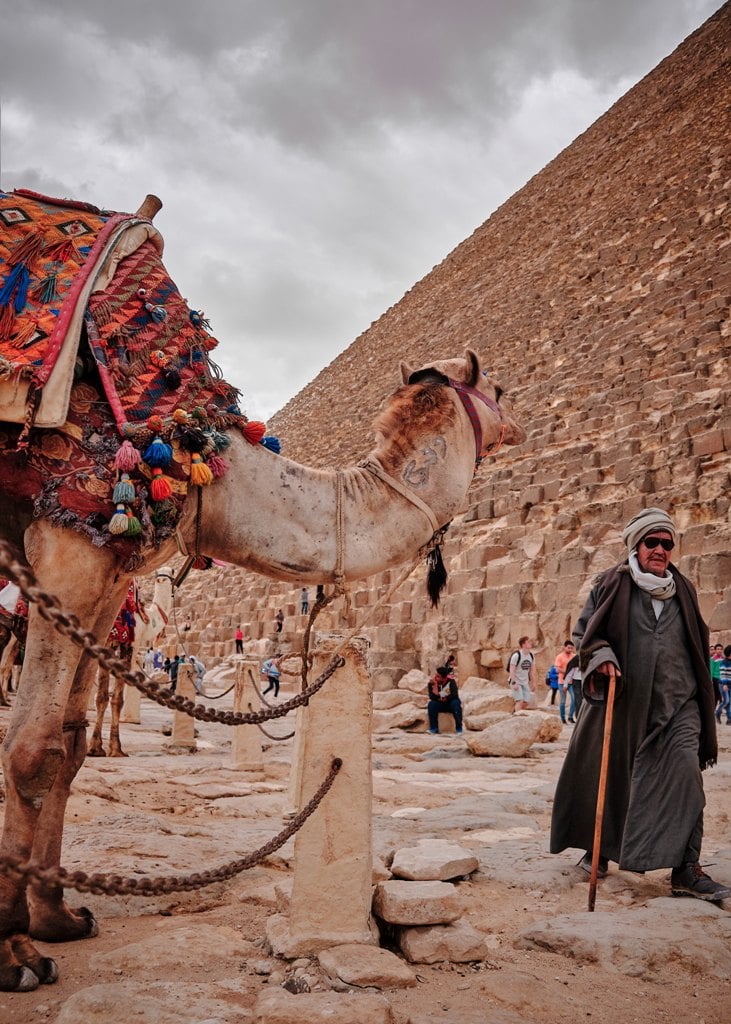
What are the hours for visiting the Giza Pyramids? The Plateau is open every day from 8 am to 4 pm from March to October and in the summer months, September to April from 7 am until 7 pm. It can get very crowded so I would advise either going in the lower season March to October to avoid both the heat and the massive crowds.
Tips for visiting the Pyramids at Giza
- The first ‘entrance’ is the security checkpoint in front of the Mena House Marriott Hotel, where they’ll briefly do a security check on the car. Your tour guides will ensure that you don’t get out here but make sure if you take a cab you stay in the vehicle. Your tour guide will take you directly to the pyramids and if you have taken a car to the site your driver can take you between the sites to visit.
- Decide which tickets you want to buy before you go inside the complex because you can’t visit the interiors of specific monuments unless you have purchased the additional tickets and there is no place to buy tickets once you enter the complex.
- Hang onto your general entrance ticket as it will be checked when visiting the Sphinx.
- Depending on the time of year the sun can be incredibly hot and the heat completely draining, don’t forget sunscreen, sunglasses and a hat and as the guides say sometimes you have to be downright rude to fend off the hawkers and civil servants who are looking for some baksheesh.
- The hawkers and touts which include men, children and uniformed officers will harass you to purchase postcards, a Gutrah (the head covering worn by Arabic men), pyramid replicas and other cheap souvenirs, the soldiers or police will tell you to pose and they will take your picture and then try to charge you some baksheesh. You are just about to lose your patience and you look up and think “I am really here, in Egypt at the pyramids, pinch me”.
Pyramids of Giza Entrance Fee

It depends on what you want to see, there are different ticket prices depending on your nationality.
General entrance (mandatory): 240 EGP for non-Egyptians (this includes outside access to all the Pyramids, the Sphinx, the funerary temples, the cemeteries, the Queens’ pyramids and the panoramic viewpoint). 120 EGP for students.
Extras:
Ticket to go inside The Great Pyramid (Khufu): 440 EGP (student: 220 EGP)
Ticket to go inside Khafre Pyramid: 100 EGP (student: 50 EGP)
Ticket to go inside Menkaure Pyramid: 100 EGP (student: 50 EGP)
Ticket for Meresankh III Tomb: 50 EGP (student: 25 EGP)
To use a tripod or camera stand: 20 EGP
Car entrance ticket: 10 EGP
Camel Rides at the Giza Plateau

As of 2020, the government of Egypt has a fixed price for the camel rides of 50 EGP ($3 USD) for 30 minutes. There’s a sign near the entrance that says so, and you can always point to it if you’re having a hard time getting a fair price from the touts. I will say that this is not a pleasant ride from what I could see. The camels were miserable, spitting at people and I am positive that they are very ill-treated. This is not something I would recommend to anyone.
Khufu and Menkaure Pyramids
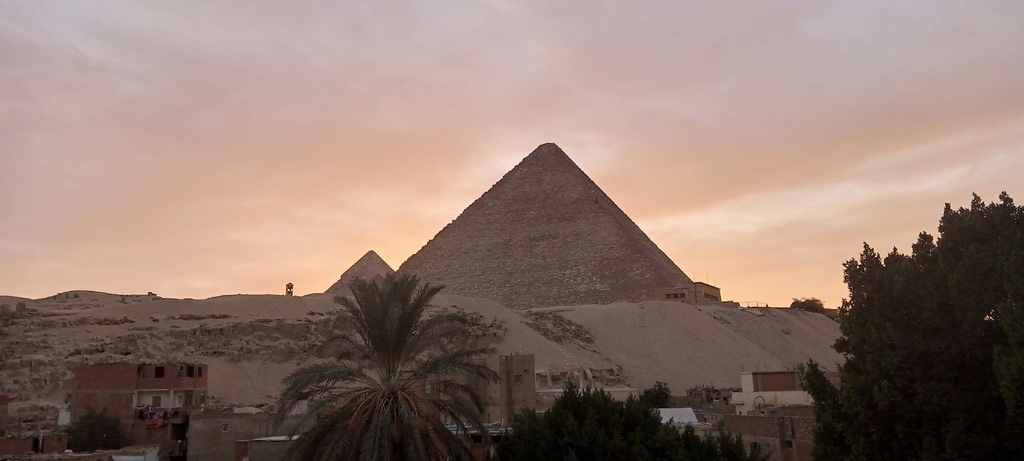
The largest pyramid is that of Khufu (it was called Cheops for years) standing a miraculous 481 feet high. On the Plateau, however, the larger pyramid appears to be that of Khafre who was reputed to be Khufu’s son. The apex of Khafre’s pyramid is still in place and the elevation somewhat higher than Khufu so the appearance is deceiving. The third pyramid is that of Menkaure believed to be Khafre’s son and several of the smaller pyramids are believed to be that of Egyptian queens.

The Sphinx
The Sphinx sits below the pyramids in the quarry from where the limestone came to build the pyramids. The Sphinx was carved in situ and was for many years covered in sand it wasn’t until 1400 B.C., that part of the Sphinx was uncovered. In front of the Sphinx is the remains of the Valley Temple of Khafre and it is through this and up into Khafre’s causeway that you can walk alongside the Sphinx.
The Causeway is the tunnel that was used to bring Khafre’s body to the Pyramid for burial. The Causeway that runs beside the sphinx is very narrow approximately 3’ wide and the line goes in and out through the same narrow entry so the crowding is very intense and there is no organizational system to get tourists in and out.
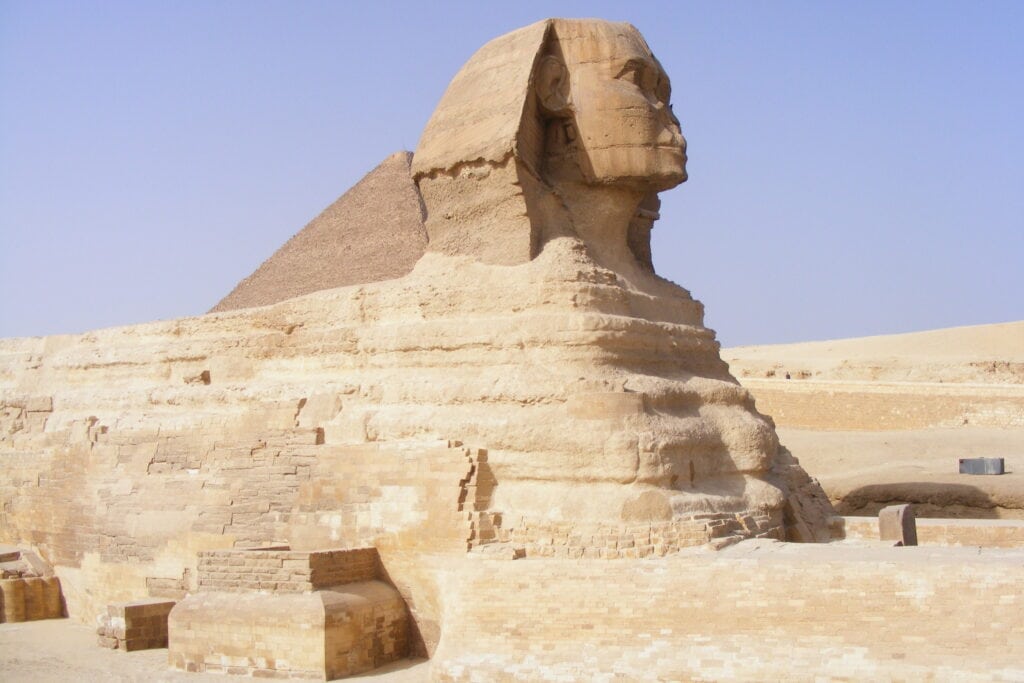
The Pyramids were built over 4,500 years ago and the Egyptians who built them believed they were going to become gods in the afterlife. They filled these temples with riches, food, and items they believed they would need in the next life. Unfortunately, most of the tomb goods have been robbed over time.
Grand Egyptian Museum – GEM
Located next to the Giza Pyramids, the Museum will host over 100,000 artifacts from ancient Egyptian civilizations, including the complete Tutankhamun collection, and is said to be the largest archaeological museum in the world. Many pieces in its collection will be displayed for the first time when it opens in late 2023. The Museum is located around 2km from the Giza Pyramid Complex.
Monastery of Saint Simon – the Cave Church
The Monastery of Saint Simon, is also known as the Cave Church, and is located in the Mokattam hills of Cairo. This church can hold up to 20,000 people, making it the largest church in the Middle East.The church holds a number of incredible stories carved into the mountain rocks which tell the birth story of Jesus. There are carvings that tell the story of the Lazarus miracle of resurrection by Jesus and a number of biblical verses are carved across the walls of the church.

Museum of Egyptian Antiquities (Cairo Museum)
This is the location of the King Tutankhamun collection and the world’s largest collection of pharaonic antiquites all of which will be relocated to the new GEM Museum. The Cairo Museum is located in Tahrir Square in central Cairo. Upon entering the museum you must check any back packs, cameras and coats as you are not allowed to photograph within the museum.
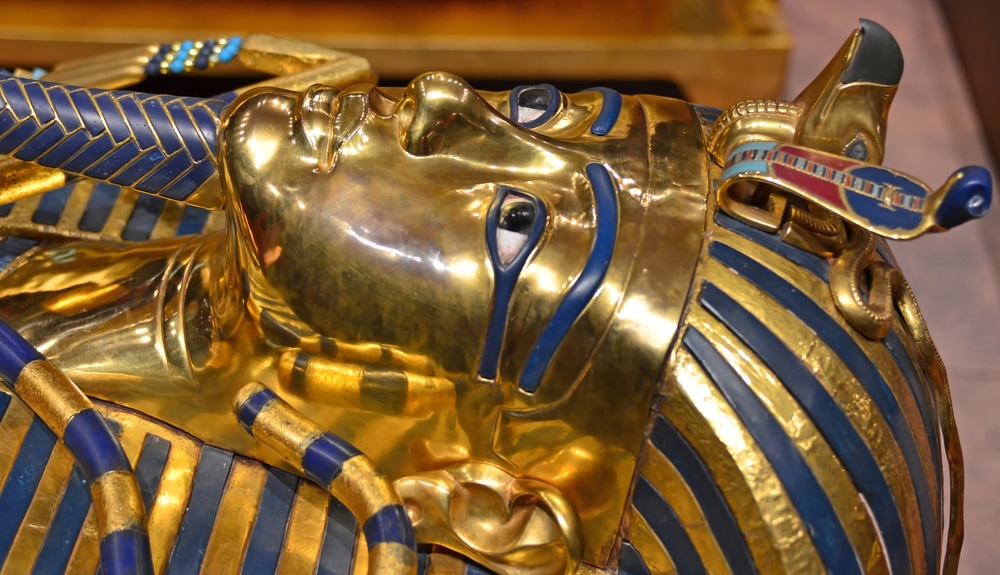
The Museum is apparently sinking under the weight of its treasures as the base is built on sand and this is why Egypt has been building a new museum for what feels like hundreds of years. This museum is rather dirty and rundown and desperately needs replacing. When we went up to see the King Tut treasures you could barely see into the cases for the fingerprints on the protective surfaces and a distinct lack of cleaning.
Cross the Nile on the Qasr El Nil Bridge
Qasr El Nil Bridge is also routinely called Kasr El Nil Bridge, and it essentially connects Cairo’s famous Tahrir Square with the Cairo Opera House complex on Gezira Island. The bridge located near Tahrir Square in Cairo, is the first bridge established in Egypt to cross the Nile, and is distinguished by those four lion statues at the entrance of the bridge made of bronze.
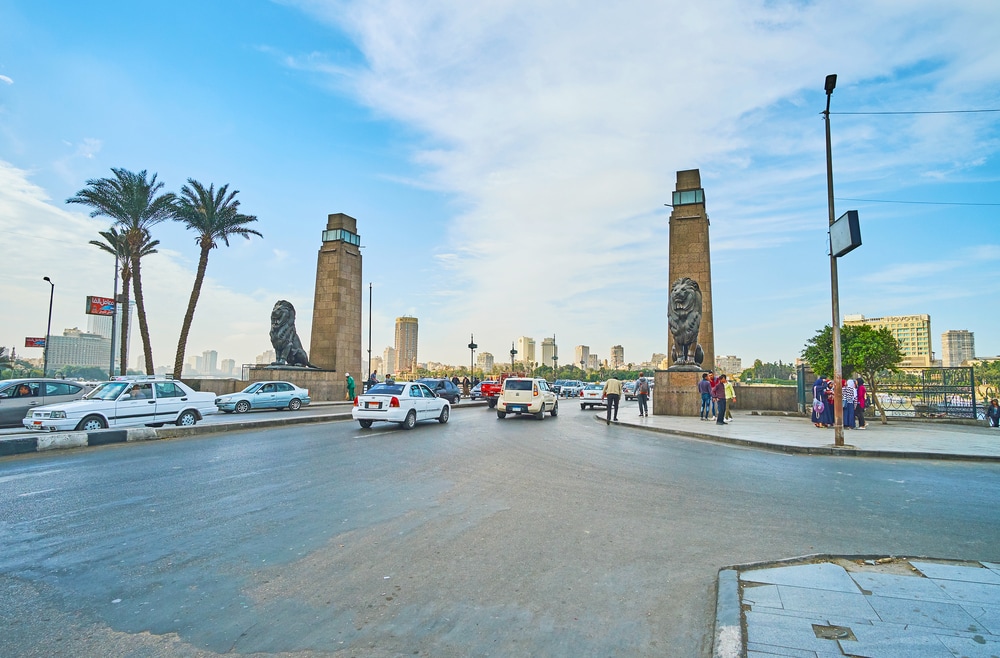
Khan el Kalili Bazaar
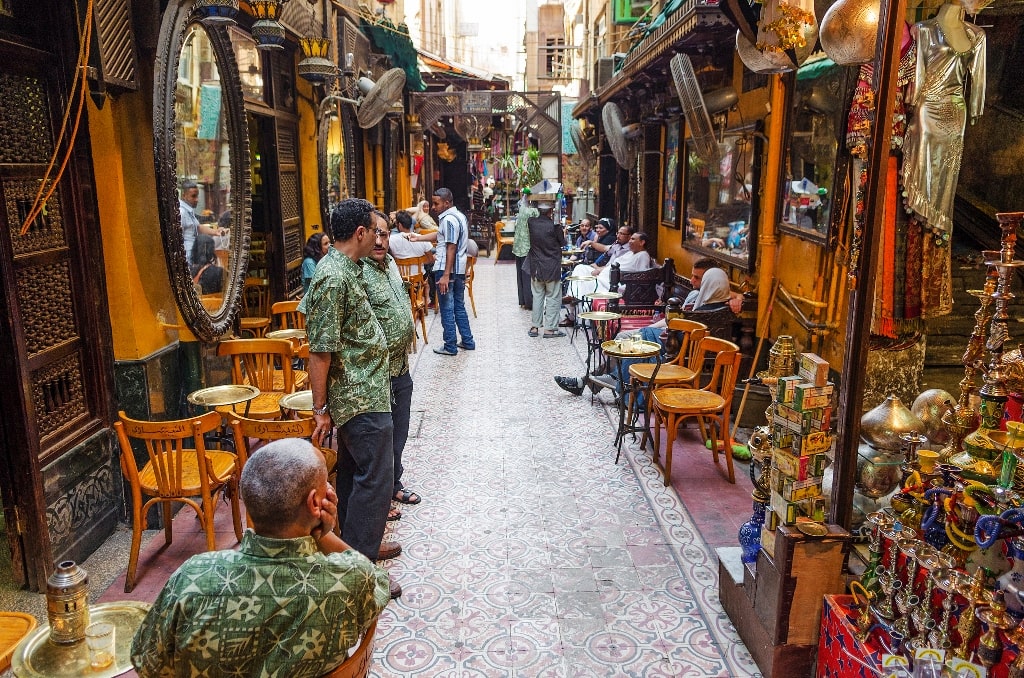
Khan el-Khalili is one of the most famous and interesting places in Cairo, Egypt. It is a large bazaar and market area over 600 years old. It is where you can find almost anything, from spices to souvenirs to clothing. Located in the historic centre of Cairo, it’s an attraction for locals and tourists alike. Its beginnings date back to the 14th century, during Egypt’s Mamluk period, when a caravanserai was set up here, the origin of the present-day bazaar.

Church of St Sergius and Bacchus – Abu Sarga
This church has acquired a special religious status among Coptic churches because it is associated with the Holy Family’s journey through Egypt. It is named after renowned early fourth century AD saints, Sergius and Bacchus, both of whom were martyred at al-Resafa in Syria for their Christian belief they were officers in the Roman army, and were held high in his favor until they were exposed as secret Christians.
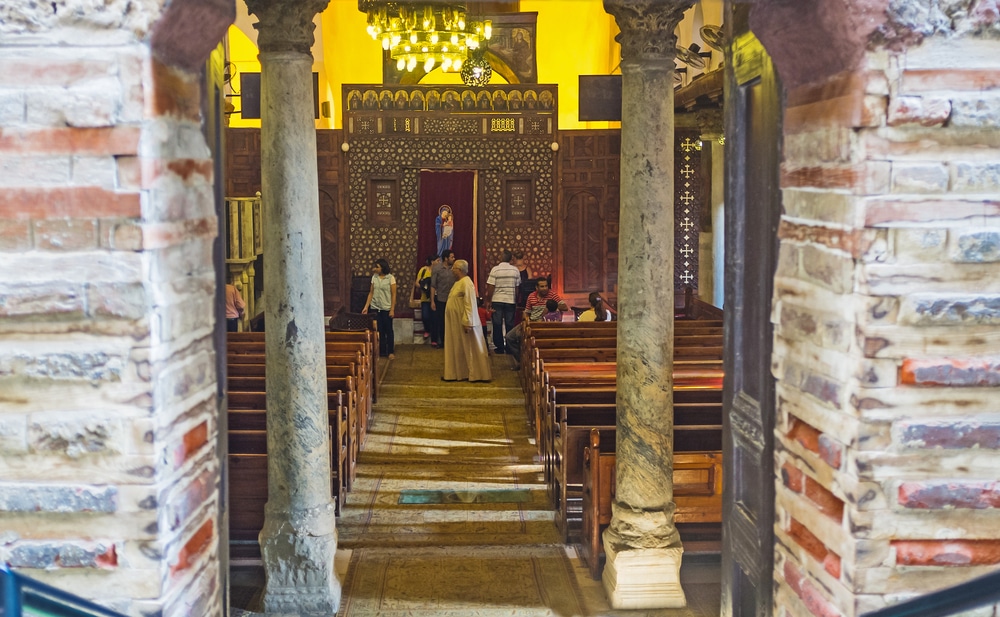
Sultan Hassan Mosque
The Mosque and Madrasa of Sultan Hasan is one of the largest and most exquisite mosques in all of Egypt. It was commissioned by the Mamluk sultan Hasan ibn al-Nasir Muhammad ibn Qalawun sometime between 757 AH/1356 AD and 764 AH/1362 AD, and is located at the end of Muhammad Ali Street.

The mosque has an open courtyard with fountain in its centre. The courtyard is surrounded by four iwans (a rectangular space that is open on one side). Doorways at the four corners of the courtyard allow access into four madrasas, or schools that taught Sunni history and foundations.
Ben Ezra Synagogue
Cairo’s oldest synagogue is said to be built close to where the baby Moses was found in his reed basket. The synagogue began as a church and in 882, it was sold and converted into synagogue. It has been rebuilt and remodeled several times in the past 1000 years. Legend also says that this is where the Prophet Jeremiah gathered the Jewish people together after Nebuchadnezzar destroyed the Jerusalem Temple.

Visit the Ibn Tulun Mosque
This is Egypt’s oldest surviving Mosque and it was built in 876 by the Turkish governor of Egypt and Syria. The mosque is surrounded by three outer ziyādahs, or courtyards and a climbable spiral minaret.
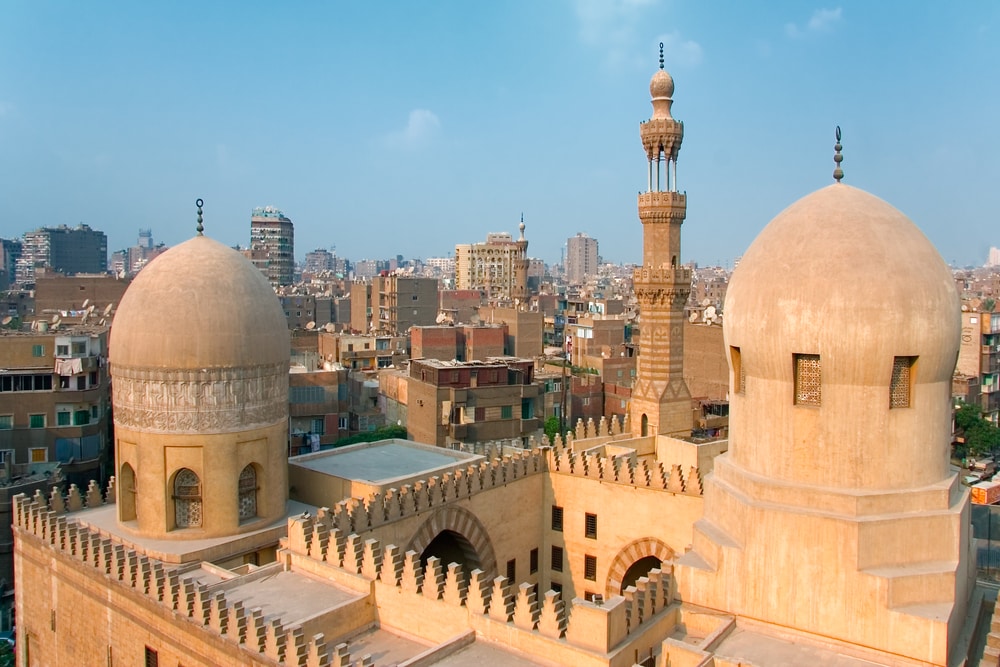
The Hanging Church
Free to visit the Hanging Church was built on the ancient Roman fortress in Old Cairo (Coptic Cairo). Its architecture is ancient Coptic with over 100 holy icons and inscribed with Arabic and Coptic markings. Situated at the heart of the Old Cairo, the Hanging Church depicts the sublime beauty of the ancient Coptic architectural style. Its roof is wooden and built in a shape that was said to be Noah’s Ark like.
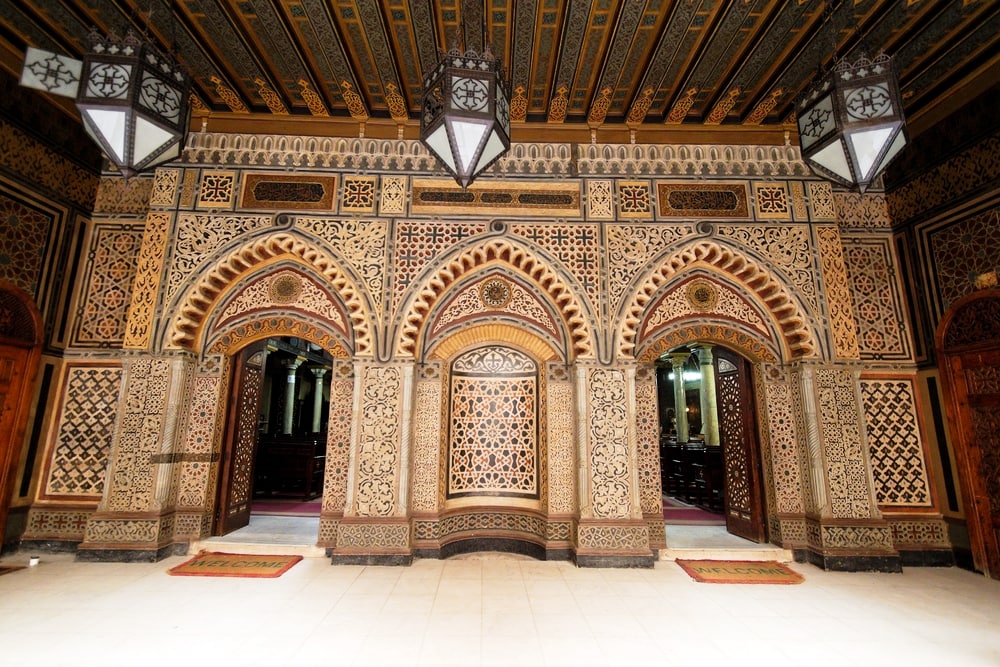
Al-Azhar Mosque
The Al-Azhar Mosque is the most important in Egypt and the most famous in the Muslim world. It has been a mosque and a university for more than a thousand years. It was established for the purpose of spreading the Shiite Doctrine but currently, Al-Azhar teaches Islam according to the Sunni Doctrine. It is the first mosque to be established in the city of Cairo and the oldest Fatimid monument existing in Egypt.
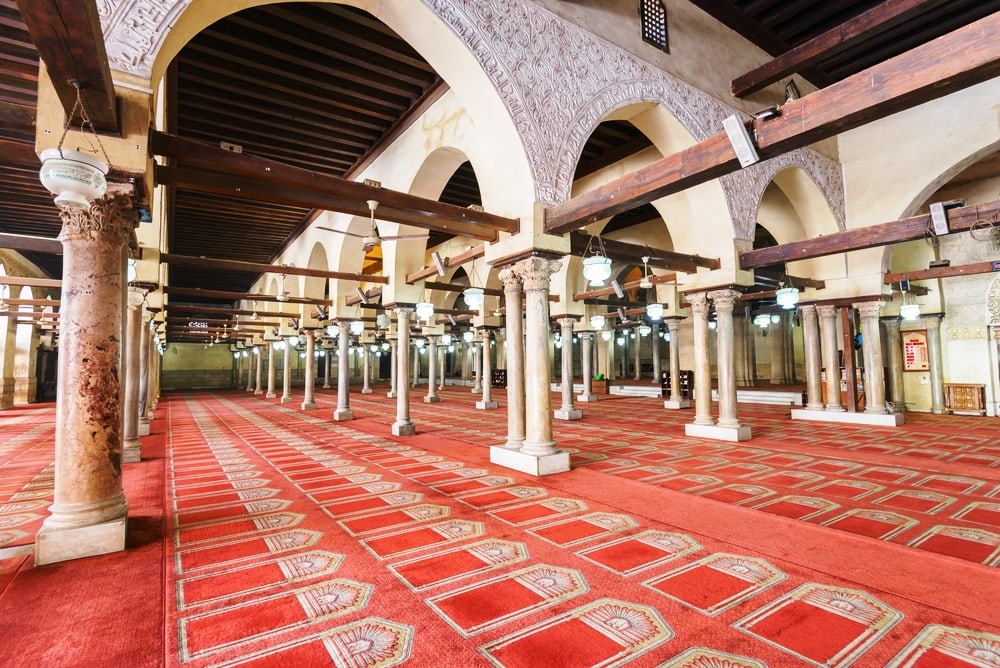
Al Azhar Park
Flanking the eastern edge of Islamic Cairo is Al Azhar Park, one of Cairo’s largest parks. Formerly a garbage dump, Al Azhar Park now features an array of fountains, manicured gardens, recreation areas and restaurants.
For many visitors, the highlight of this public space is the Ayyubid wall, which was constructed by the founder of the Ayyubid Dynasty, Salah El-Din, more than 800 years ago.
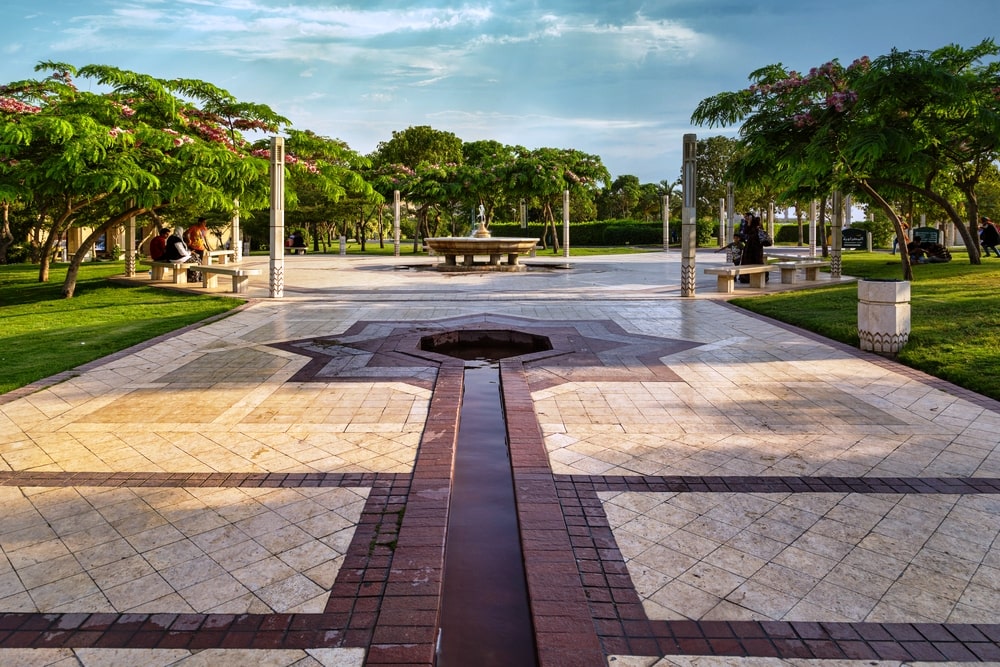
If you love shopping (and I do) you must pick up some Egyptian items to bring home with you Lindsay has a great article on Her blog Carpe Diem Our Way on 10 Things You Should Buy in Egypt. I have to say I bought every single one of them home with me…lol..
If you enjoyed reading about the pyramids you might enjoy learning more about Turkey and the White Marble Road, or visiting Mary’s House in the Turkish hills and if you favour the Goddess take a quick trip to the Temple of Artemis.
you might also like
